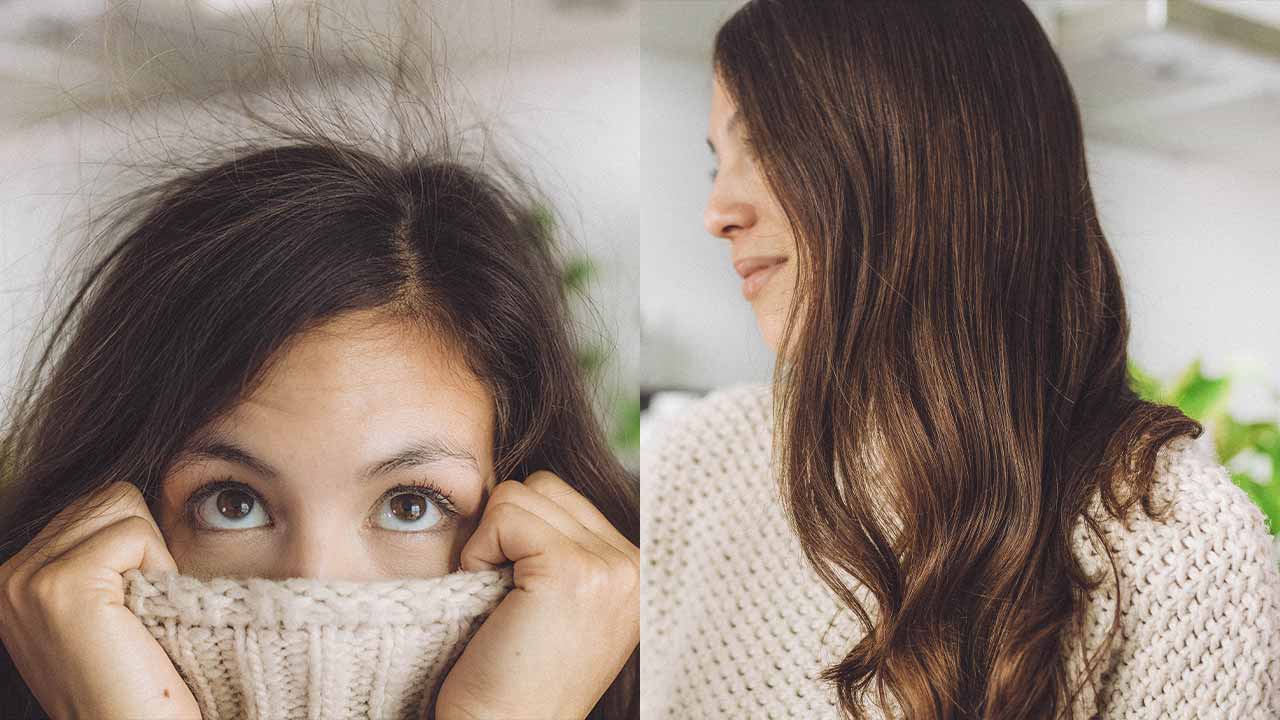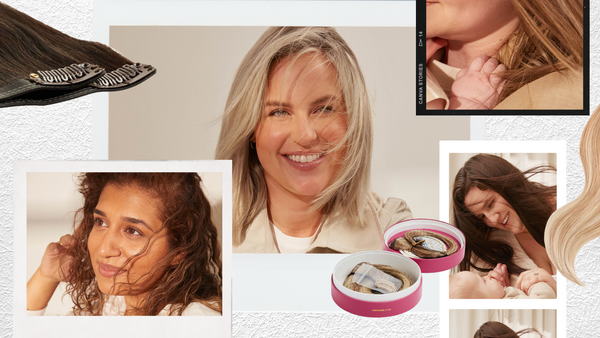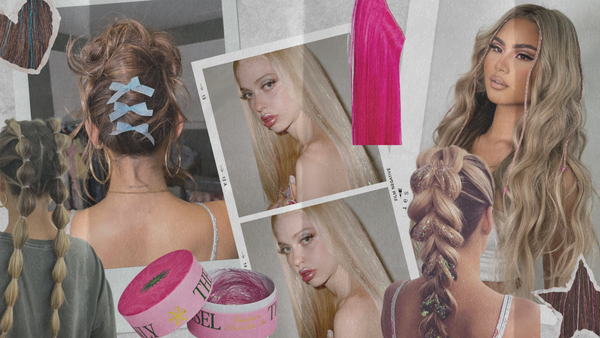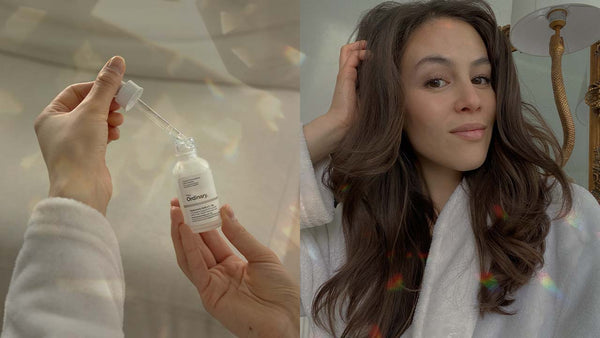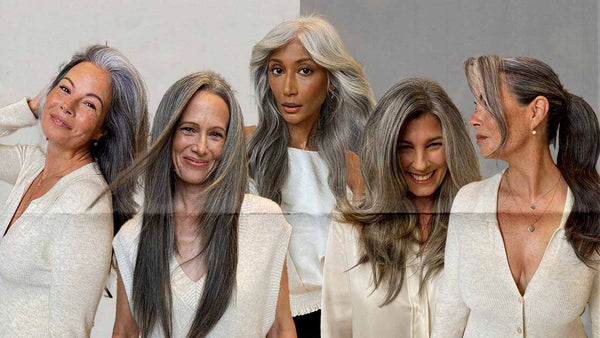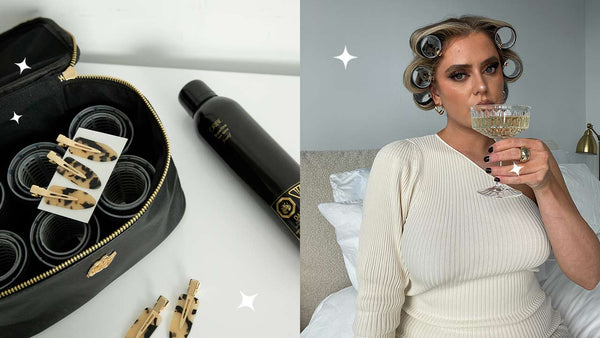QUESTION:
Why is static ruining my hair vibe? What causes static?
"SCIENTIFIC" ANSWER:
Static hair happens when hair becomes charged with electricity. All hair is made up of atoms, and atoms are composed of protons, neutrons and electrons. When two objects rub together, one of them loses its electrons and becomes positively charged, while the other gains electrons and becomes negatively charged. This causes static electricity in hair.
OUR ANSWER:
Electricity, atoms, blah blah blah. Static hair is the perfect example of when opposites attract, all in the name of ruining a good hair day. What's important to know is that STATIC makes your hair get stuck in your lashes, ruins your lipgloss, ruins the hairstyle you so reluctantly woke up a whole 30 extra minutes earlier for, and I mean don't even think about that cute selfie you were about to take just now. Because:
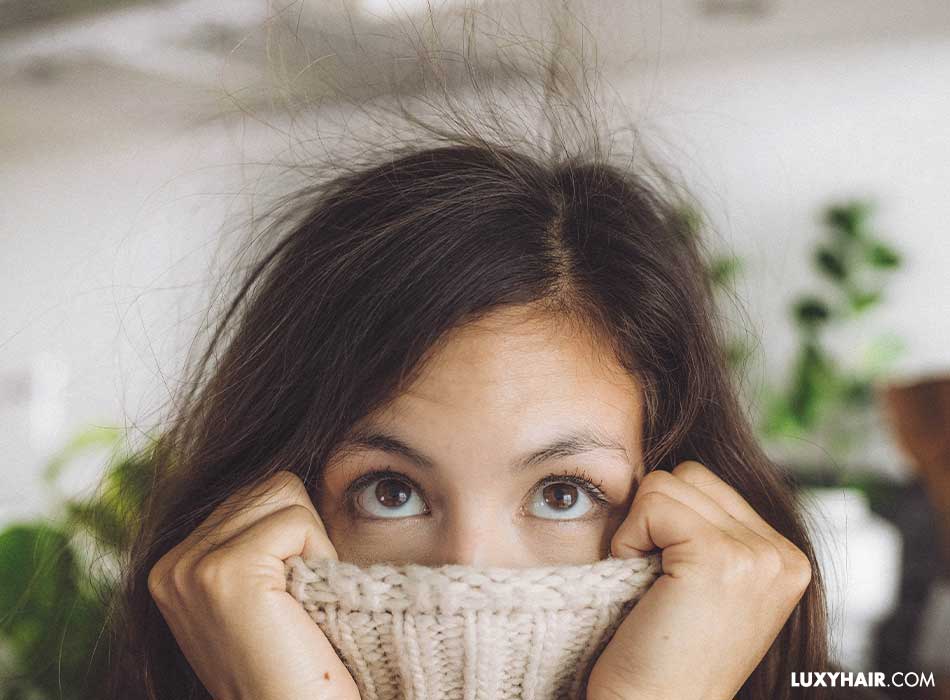
The result? Crazy locks that make it look like you were either electrified or attacked by an army of balloons.
As if cold weather and dry air weren’t bone-chilling enough, now we gotta deal with this scientific phenomenon at the expense of our beauty. Static hair in the winter is the ultimate hair raising experience, literally. The dry air and reduction of moisture in our hair loads our hair up with electricity, unfortunately making us all targets.
Pfft. Good thing there are a few simple things you can do to combat it - and we share them all today!
Watch out girls with fine hair! This can be a real staticky situation for you especially, your hair will expand from the effects of static hair more than those with thick hair. For you fine haired ladies, check out our hair extensions for a longer, thicker look.
*Sigh* can we have a moment of silence for all of those good hair days, where no one important saw you.
Let’s face it, ain’t nobody got time for bad static hair days. But don’t despair, we have compiled a list of how to get rid of static hair including top static hair products, tips, and tricks to keep your hair looking its best all year round.
How to get rid of static hair
1. Anti-static dryer sheets
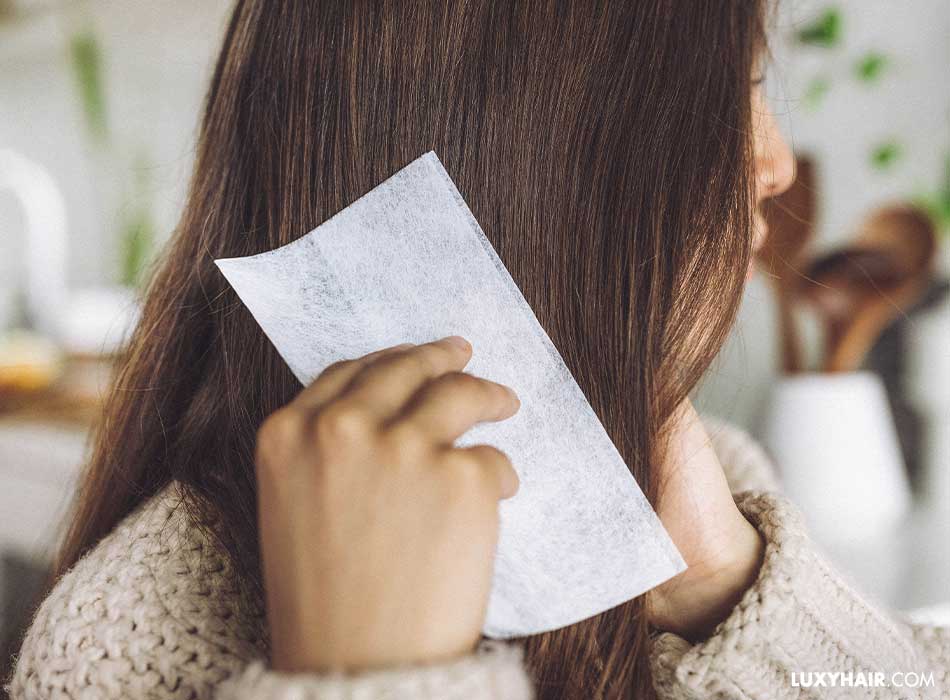
You know those Bounce sheet things your mom always puts in the dryer when she does laundry? Not only do they make your bedsheets smell amazing, they also work like magic in de-static-ing (ok clearly that's not a real word, but you get it) your hair. It will actually neutralize the charge and rid you of your static hair.
Have a few sheets of those in your purse or pocket at. all. times. during the winter. Try also rubbing the dryer sheets on your plastic combs and brushes to reduce static hair.
If you’re worried about harsh chemicals from laundry sheets that may not be meant for your skin, there are anti-static sheets specifically designed for getting rid of static hair as well.
Mmm. Outdoor fresh.
2. Hairspray, leave-in conditioner, or hair oil

Carry a travel size hairspray, leave-in serum, or hair oil to fight static hair.
Either buy specially formulated static hair products for your hair type in stores or venture into your kitchen and use cooking oils like olive oil or coconut oil. Don’t go overboard with application, a small amount will go a long way.
For the hairspray, choose one that is alcohol-free since alcohol is drying to the hair. Spray hairspray onto your comb and evenly distribute it down your hair shaft to reduce static hair and tame flyaways.
3. Nothing on hand?
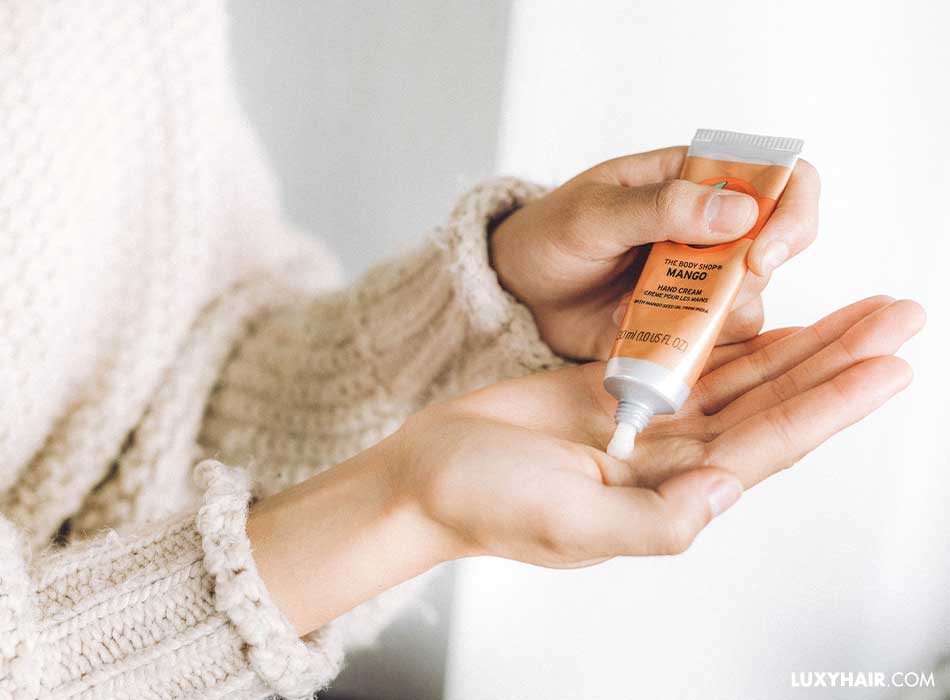
Use any cream that you have in your purse. A bit of body lotion, face or hand cream, whatever! The added moisture will be a godsend to your hair.
Squeeze just a pea size amount, rub in your hands and run through your hair. You don't want to use a lot of product because it can leave your hair oily (especially if it isn't designed for hair) and make it feel weighed down. Focus the cream on the ends and less on the scalp to avoid looking like you haven’t washed your hair in weeks. Just a tiny bit will do the trick in getting your static hair under control.
4. Not even a cream on hand?
Oh ok, well then, you can find some water and use a tiny amount to tame the static. Not the most optimal solution but the most accessible, that's for sure! Rubbing an ice cube over flyaway strands is another alternative that people have sworn by.
The best way to use water is as a spot treatment, only use it on the areas where the static hair exists. Just a little bit of water will do and then pin the front pieces away with some bobby pins, as those are the most annoying pieces that stick to your face with static.
If there is an overwhelming amount of static hair, try wetting your hairbrush, or put some water in a spray mister bottle and spritz it on your hair to smooth it down.
5. Do not use plastic
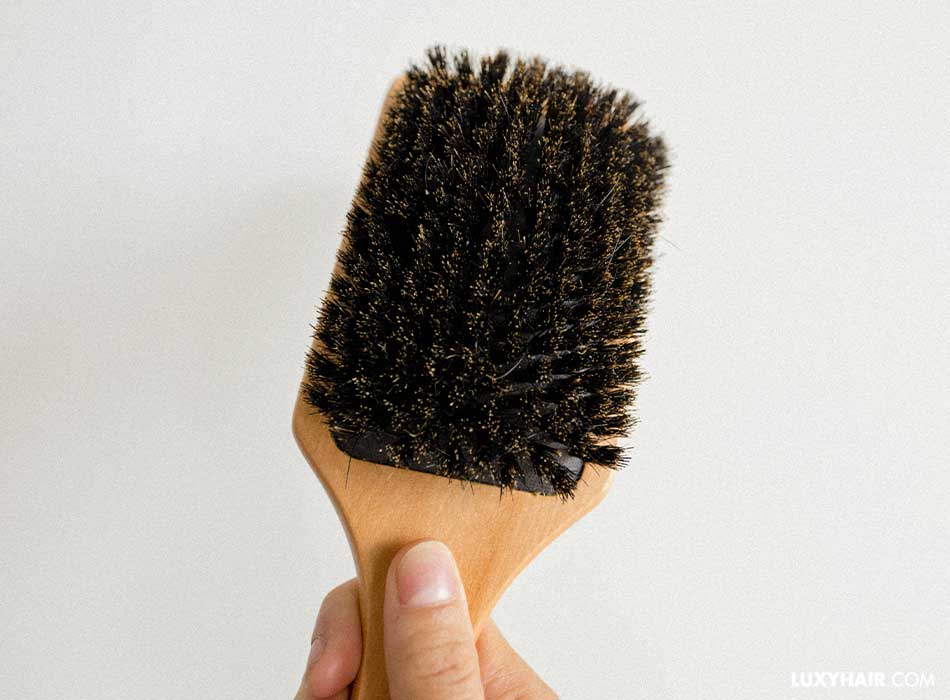
If you have a plastic comb or a hair brush, they may look harmless, but using them is not a good idea. This is because plastic is non-conductive which means your hair will become much more staticky). Instead, opt for a wooden or a metal comb, as those are conductive and thus - will get rid of static hair. Science!
The added benefit is that on top of removing static hair these materials are also more environmentally friendly than plastics, so you can tame your mane while still showing love to the environment.
6. Humidify that ish

Obviously you can't control the air moisture everywhere especially if you live in a place with colder climates. Particularly in the winter, when the cold air outside is paired with the warm indoor heat needless to say it’s a bad combination for your hair.
But if you're experiencing static hair at your own house, it's a good indicator that the air is very dry and remember more moisture equals less static. A very simple solution is to turn on the humidifier, adding more moisture to the air, which will improve both air quality and life quality (because you will no longer have to deal with static in your hair). How cool.
You can find compact humidifiers at any department store or order one online. All you have to do is fill the device with the right amount of water, turn it on, and say good-bye to static hair in your home.
7. Clothing au-naturel

Synthetic materials, especially nylon and polyester, will charge up real quick and contribute to your static hair situation. So if your jacket, scarf, hat, or sweater contain these materials, it's more likely that you will experience static hair. Instead, try opting for materials like cotton, wool, or silk to reduce the amount of static.
For extra protection during the winter, purchase a travel size bottle of static guard (as tempted as you may be, don’t spray this on your head) and spray it on the inside and outside of all of your winter accessories to protect against static hair.
When it comes to fending off static hair you can take into consideration what you’re wearing all the way down to your shoes. By wearing shoes with rubber soles and walking on carpet you can cause an electric charge to transfer to your hair, creating static. So, avoid rubber soled shoes if you're prone to static hair.
8. Ionic hair dryers for the win

Another way to decrease the chance of static hair is something you can do straight out of the shower. Letting your hair dry naturally using a microfiber towel or T-shirt are the best ways to combat static hair because coarse towel fabric can cause hair cuticles to open.
However, if you’re short on time opt for an ionic hair dryer versus a regular hair dryer. This styling tool is incredibly useful and will not only dry your hair faster and cause less damage, but the negative ions from the dryer will neutralize the positive ions which is how to get rid of static hair.
9. Watch your shower habits
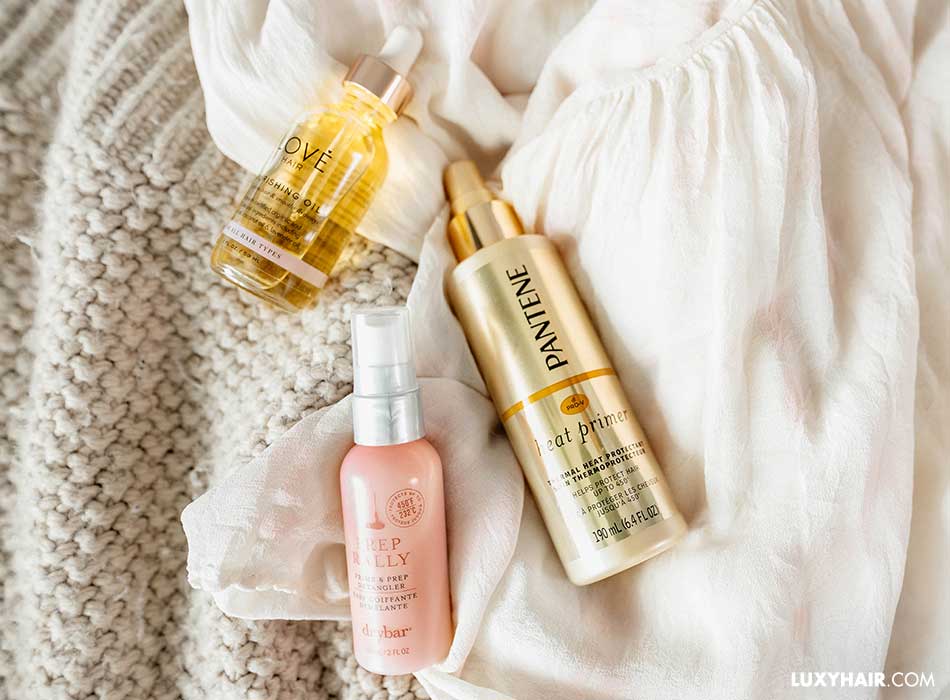
If you’re wondering how to get rid of static hair right in the shower, keep in mind how often you shampoo your hair in a week. Don’t wash your hair everyday, instead shampoo 2-3 times a week. Shampoo has harsh detergents that strip your hair of moisture and don’t allow the hairs natural oils to work their magic.
Make sure you don’t skip out on conditioner either, always use it after shampooing. Find a high-quality conditioner that doesn’t contain drying ingredients like alcohol, to incorporate into your hair care routine.
If your hair is dehydrated it is more likely to conduct an electric charge causing static hair. By shampooing less, but using a high-quality conditioner this can improve the quality of your hair and help to get rid of static hair in the long-term.
A switch to a silicone based conditioner is another hack that can keep static hair at bay. The silicone creates a layer that protects against static hair and even gives you a bit more shine. Scan the ingredients at the back of the bottle to ensure there is silicone!
10. Put your hair in a bun, drink your coffee, and handle it
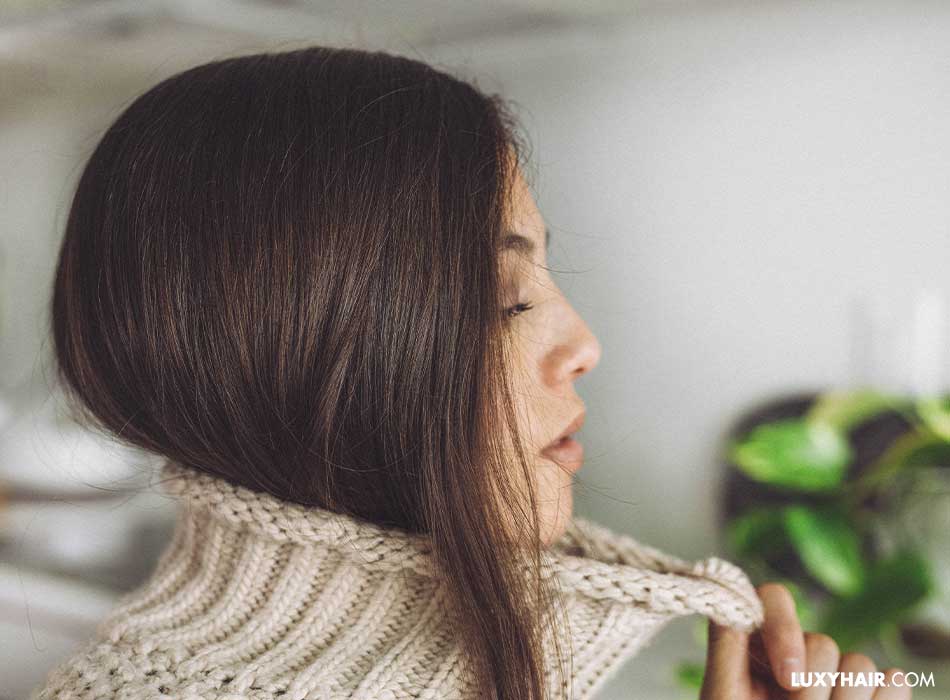
Sometimes no matter what you do, you can’t salvage your hair when static attacks. The next best thing to tame your locks is by pulling your hair up into a bun or ponytail to keep static hair flyaways away from your face. For a gorgeously full ponytail check out our hair extensions and our techniques on how to create volume.
Another option to hide static hair is to try styling your hair into braids (very on trend). Check out these super cute braid tutorials. From beginner braids to advanced, these tutorials have you covered for finding the ultimate way to handle your static hair. If you have thin hair and want a fuller braid, try our seamless hair extensions.
Battle your static

The big takeaway in trying to win the war on static hair is that more moisture equals less static. Taking care of your hair is a lifestyle and a continuous journey, when your hair has more moisture you’re not as likely to be a victim of static hair because it won’t become loaded with electricity. Especially in the winter, keep these tips in mind to best prepare yourself for the potential for static hair. Looking for more winter hair care advice? Check out this blog post.
Whether it’s choosing better products to keep your hair from becoming dry or having a few tricks up your sleeve or in your purse which are going to help to alleviate pesky static hair, just remember there are ways to still get that cute selfie sans static hair.
That's about it, ladies! We hope this list helped to demystify how to remove static from hair. Try a few of these tips/tricks and let us know if they work for you.
Written by: Amanda Desouza
